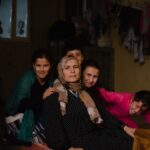
It is known that the global refugee crisis is growing, and at the end of 2020 there were 26.4 million forcibly displaced from their home countries. Extreme inequalities in the oral health of refugees are reputed around the world. It is known that the prevalence of untreated oral diseases among refugees is greater than both the host population and other underprivileged population groups in the host country. Dental caries, chronic gingivitis, and periodontitis are the main conditions affecting refugees, with dental caries being more prevalent in refugee children.
This systematic review aims to appraise and summarise the published evidence from quantitative studies on the factors determining access to dental care among refugees worldwide.
Methods
This review followed PRISMA guidelines, and the protocol was registered in PROSPERO database. The search was conducted in MEDLINE (via Ovid), Embase (via Ovid), Web of Science (all databases) and American Psychology Association PsycINFO databases. Studies were deemed eligible if they examined factors associated with access to dental care among refugees resettled/living in the host countries. National Institutes of Health quality assessment tool was used to assess the methodological quality of the included observational studies. The design and implementation of a study, including methods, sources of bias, confounding, study power, strength of causality in the association between exposure and outcomes were scored and the overall quality of each study was judged to be ‘good’ (11–14), ‘fair’ (5–10) or ‘poor’ (0–4). A narrative summary was presented.
Results
- 9 studies were included in the review.
- The refugee population sampled in the included studies originated from multiple countries, such as Somali, Tibet, Palestine, Bhutan, and Burma.
- The quality of the included studies was assessed to be ‘fair’ at best. Two studies were rated to be of ‘poor’ quality.
- One study reported a greater use of dental services was significantly associated with older age, while another reported a significantly higher mean number of missed appointments among refugee children in the adolescent age group.
- No association was found between country of origin and the number of missed appointments.
- Higher English language proficiency was found to be associated with greater access to dental care in three studies.
- Higher functional health literacy and dental word recognition among Somali refugees were significantly associated with dental care access.
- Dental caries experience (DMFT/DMFS scores) in permanent dentition was significantly associated with the previous dental visits.
- The use of dental services was found to be higher among refugees attending private dental service providers in Sweden than those attending government/public dental services.
Conclusions
The findings from the current review suggest that at the individual level, English language proficiency, education, health and dental literacy, and acculturation and integration significantly predispose refugees’ access. However, there is limited evidence to determine the effect of individual enabling and need and contextual factors.
Comments
Factors associated with access to dental care among refugees is undoubtably complex and a systematic review is not enough to encapsulate all important factors. With this in mind, this review does provide a helpful insight into the factors that are deemed significant, such as English language proficiency and health literacy, which can be considered when planning future services for this patient group. Some factors, such as housing, employment (and associated income), and transportation have been deemed important in previous qualitative research (Paisi M, et al 2022), but were not found to be statistically significant in the studies identified in this review. Arguably, qualitative research may be a more appropriate study design to identify factors associated with dental access as subjective experiences of refugees may be missed or overlooked when focusing on what factors are statistically significance. Most studies identified in this review used a cross-sectional or retrospective design which only measure the affect at a given point in time. Longitudinal cohort studies would be appropriate to understand how the relationship between the factors and dental access changes over time, as the resettling refugee populations adapt to host culture. Overall, this review does identify the factors significantly associated with the dental access in the refugee population, however further research is required.
Links
Primary paper
Veginadu P, Gussy M, Calache H, Masood M. Factors associated with access to dental care among refugees: A systematic review of quantitative studies. Community Dent Oral Epidemiol. 2022 Dec 28. doi: 10.1111/cdoe.12835. Epub ahead of print. PMID: 36575988.
Other references
Paisi M, Baines R, Wheat H, Doughty J, Kaddour S, Radford PJ, Stylianou E, Shawe J, Witton R. Factors affecting oral health care for asylum seekers and refugees in England: a qualitative study of key stakeholders’ perspectives and experiences. Br Dent J. 2022 Jun 8:1–7. doi: 10.1038/s41415-022-4340-5. Epub ahead of print. PMID: 35676462; PMCID: PMC9176155.
Photo credits
Photo by Levi Meir Clancy on Unsplash
